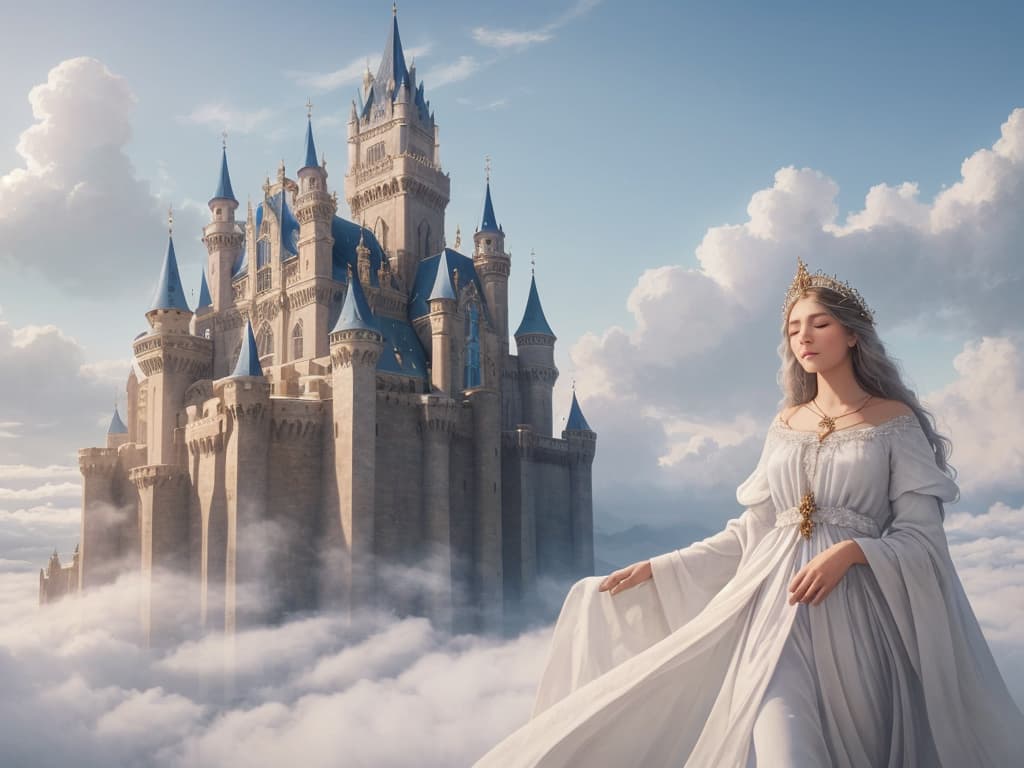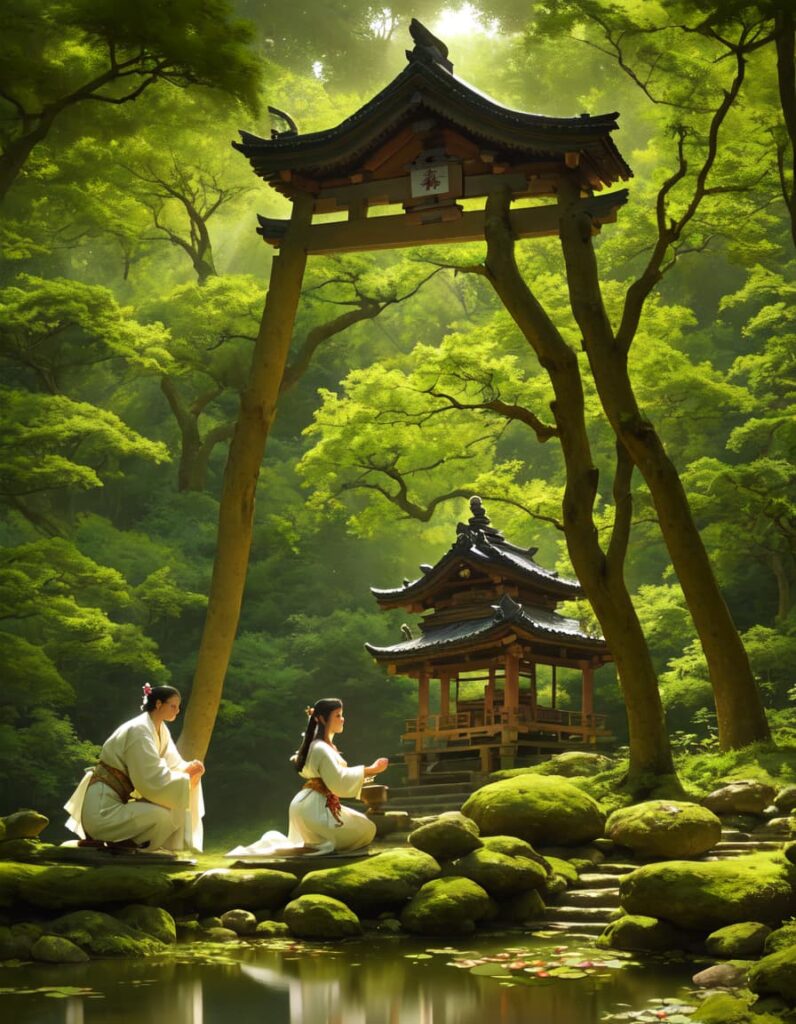Ahura’s Defiance Against the Creator: Understanding the Third Turning Point in Mythological History
The Third Turning Point in Mythology: The Rebellion Against the Creator
This world was created by the Creator as a realm of goodness. However, since growth cannot arise from goodness alone, the Creator also intentionally introduced evil. Even so, the central principle of the universe remains rooted in good, which is expressed as “light”—a measure tied to spiritual rank.
Earth is on a 4-million-year journey along a cosmic path known as the “Great Serpent.” At the heart of this path lies Nirvana, where the Creator is said to reside. From there, spiritual light flows outward—even reaching Earth.
Yet, certain regions along this path obscure the light, and during these times of darkness, the spiritual beings connected to Earth lose their way. This is what is known as “falling into darkness.”
During such dark ages, people can no longer rely on outer light. Instead, they must walk the right path guided only by the light within their own hearts.
That said, Earth is not always engulfed in darkness. Every 3,000 years, a period of illumination called the “Dawn of Dan” arrives. During these times, Earth receives divine light again, and archangels descend, bringing new missions and revelations for humanity to follow through the next 3,000-year cycle.
There are also shorter cycles of 100, 200, 400, 500, and 600 years that offer brief moments of light. However, the key turning points are always marked by the 3,000-year Dawns of Dan.
Ctusk’s Misguided Wish to Make Earth a Planet of Light
Ctusk, one of Earth’s ruling gods, was deeply troubled by humanity’s repeated descent into darkness whenever Earth moved away from the cosmic light. To end this cycle, he thought of a radical solution: What if Earth itself could become a source of light?
That’s when he reached a dangerous conclusion—“I should become the Creator.”
But this was a grave misunderstanding. The Creator is not defined by a title or status, but by being itself. Ctusk believed he could become the Creator simply by claiming that role. This became one of the greatest errors in the study of mythology.
He took the name Ahura and declared himself the creator of Earth, believing he could save humanity from spiritual darkness.
The Alteration of Zoroastrian Scriptures by Ahura
However, there were still many on Earth who worshipped the true Creator. These were the followers of Zarathustra, who had compiled the original holy text together with the god I’huan Mazda.
Ahura set out to rewrite that sacred text. He erased the name of the original Creator, Ormazd, and replaced I’huan Mazda with Ahura Mazda, claiming he was the one true deity.
In this revised scripture, Ahura Mazda was now portrayed as the Creator of the world. Still, not all Zarathustra followers accepted this new version. Many remained faithful to the original teachings.
Purge and Martyrdom: The Struggle to Preserve Zarathustra’s Teachings
To suppress resistance, Ahura labeled the believers of the original scripture as heretics. Their very existence threatened his divine claim.
What followed was a brutal purge. This era of bloodshed unfolded after Zarathustra’s martyrdom, marking a major crisis within the next 3,000-year cycle.
At that time, the world was divided into two camps—those who accepted Ahura Mazda as the creator, and those who stayed loyal to the true Creator.
But the latter group, bound by spiritual commandments that forbade violence, could not fight back. Many were killed at the hands of Ahura’s forces.
This long period of persecution—from around 7000 BCE to 4000 BCE—came to be known in mythological history as the Third Turning Point.

The Age of Divine Rebellion and Division: From the Fourth to the Fifth Turning Point
The Isolation and Fall of Ahura – The Stirring of a New Rebellion
Ahura, who had declared himself the Creator, continued to insist on his divinity. However, his lies could not last forever. Eventually, people began to see through the deception, and they stopped listening to him.
As a result, Ahura became increasingly isolated. Even the gods of Earth began to reject him. A new stronghold called Maitraya-as was established on Earth’s front lines, and Vishnu was appointed as its first chief god. From this base, Vishnu began to liberate and heal those who had suffered under Ahura’s rule.
Ahura’s power dwindled, and in the end, he was captured by the very people he had once oppressed and cast down into the underworld.
Anuhasaj’s Return from the Shadows – The Rise of a New Revolt
Anuhasaj, Ahura’s closest ally, fell into the underworld with him. Later, however, he was rescued by the gods of the higher heavens. Yet even after his release, resentment toward the Creator continued to smolder within him.
Anuhasaj believed that Ahura’s downfall was due to his monopoly on power and his lack of fairness. Determined not to repeat the same mistakes, he vowed to take a different path.
For centuries, Anuhasaj hid his rebellious intentions. He traveled to Maitraya-as, a critical spiritual domain near Earth, and served faithfully as one of its gods. Gradually, he earned the trust of others and eventually rose to the position of chief god of Maitraya-as.
At the time, this realm was relatively stable, thanks to its success in keeping dark spirits from entering the lower heavens. However, many of the gods serving under him grew frustrated. They felt that other heavenly realms were shifting their burdens onto Maitraya-as, leaving them overworked and unappreciated.
Anuhasaj cleverly exploited their frustration, gradually redirecting their anger toward the Creator and the divine order on Earth. Eventually, he led a full-scale rebellion. The uprising was successful—Anuhasaj’s forces seized control of the Earth. He adopted a new name, De’yus, and once again claimed the title of Creator.
Rule Without Territory — The Contradictions of the De’yus Regime
De’yus, learning from the failures of his former master Ahura, chose not to hold any territory of his own. Instead, he distributed all lands among his subordinate gods. In return, these gods were required to offer tributes—both in the form of valuable spirits and resources—from their respective territories.
At first, this approach brought success. The gods were pleased to have their own domains, and the regime of De’yus temporarily flourished. This era is known in mythology as the “Fourth Turning Point.”
Even today, the name De’yus is remembered, and he is said to have commanded gods such as Poseidon, Artemis, and Hephaestus. However, the tribute system imposed by De’yus placed a heavy burden on the various territories, eventually draining them both spiritually and economically.
The Fall of De’yus and the Rise of Independent Gods
Under the weight of excessive taxation, discontent began to grow. Eventually, some gods rebelled. Since De’yus had no land of his own, his power base was weak—and he quickly collapsed under the pressure of the uprising.
After De’yus’s downfall, many gods began to proclaim themselves as creators, ushering in an era of divine independence. This period marks the “Fifth Turning Point” in mythology—a time defined by confusion, decentralization, and the spread of polytheism.
Uncovering the History and Ideas Behind Myth — A Mythological Perspective
The Birth of Japanese Mythology Through the Lens of Mythology Studies
Following the fall of De’yus, myths began to emerge in many lands, each centered around the local gods who had governed those regions. One of these mythologies was that of Japan.
In Japanese mythology, it is said that Kuninotokotachi-no-Mikoto created the Japanese archipelago. However, this story is actually a retelling of the “creator god” narrative that had once been performed by the high god De’yus.
In Japan, whether by fate or fortune, these myths were compiled by official scribes in works like the Kojiki and Nihon Shoki. As a result, they survived and were passed down through generations to the present day.

From another viewpoint, the formation of Japanese mythology can also be seen as part of the “Fifth Turning Point” in mythological history—the age that followed the fall of De’yus and the beginning of divine independence.
At the same time, in Egypt, faith in deities like Osiris and Isis began to take root. These various myths around the world were born during a chaotic era in which gods started to claim the title of creator for themselves.
Thus, exploring the hidden structures and historical contexts behind mythologies is a vital task of mythology studies. It allows us to reflect on the thoughts and spirits of those ancient times—and understand how they continue to shape our world today.
References、Images Used
| books | authors | publishers |
|---|---|---|
| OAHSPE ”A New Bible in the Worlds of Jehofih and His angel embassadors.” | John B. Newbrough | OAHSPE PUBLISHING ASSOCIATION |
| ”BEROSSOS AND MANETHO” Introduced and Translated Mesopotamia and Egypt | Gerald P. Verbrugghe John M. Wickersham | The University of Michigan Press |
| 古代エジプト全史 | 河合 望 | 株式会社雄山閣 |
Images:Generated by stable diffusion (model: protogen x3.4)


コメント